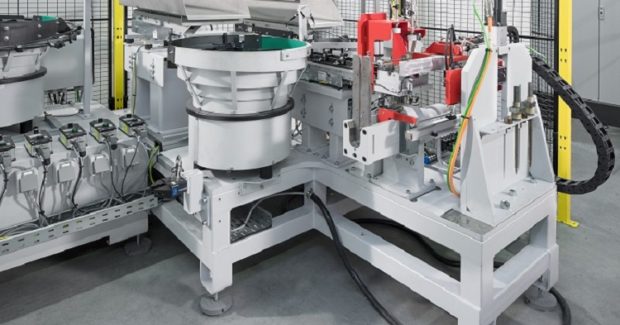Smaller Tube Machining Quantities, Lots of Automation
An automated production cell from Transfluid can produce small quantities of complex pipe configurations by using an integrated axial forming machine to create geometries or hose connections and a second forming machine for flanges that are necessary on some components.
Posted: September 27, 2017
This nearly seems possible: automatically producing tubes in small quantities. Prompted by increasing demand, this trend meets expectations for economy and efficiency to allow the sort of production that transfluid Maschinenbau GmbH (Schmallenberg, Germany) will feature in Booth B11069 with a highly flexible production cell for complex pipe configurations. “The most important thing for automation in small quantities is process reliability and the ability to read out data precisely. They key word is Industry 4.0,” explained Stefanie Flaeper, the managing director of transfluid. “In addition, there is employee-independent production. And with automated processing, the process has a strong influence on subsequent procedures, such as assembly of component groups. Here, automation offers a good deal of planning certainty.”
Transfluid has a customer that wanted a precisely coordinated automation system: one for processing chromium VI free-coated tubes, as well as tubes with powder-coated surfaces that are very sensitive. The workpieces can be relatively short (150 mm) or relatively long (up to 3,000 mm), and loading was to be automatic. Moreover, cutting ring assembly was required, along with mounting of flanges, production of hose connections. Altogether, this was very demanding, but the challenge was met with an automation system that, after the separation process, the workpiece can be loaded into a slide conveyor for automatic loading. For powder-coated tubes, separate loading is provided for the small quantities being loaded to prevent surface damage.
An integrated axial forming machine creates geometries or hose connections. On a second forming machine, the flanges necessary for some components can be loaded and attached. Then the tubes are correctly positioned in a bending machine, bent and then unloaded by a robot that performs all of the handling, from separation to the individual machines. For tubes used in hydraulic systems, the processing procedure first involves a bending cell that makes the right/left bend on a fully electrical machine. The robot then positions the tube for a die ring assembly. The nut and die ring are automatically loaded, then monitored assembly occurs. The pressure and stroke are monitored and properly documented by the system for tracing.
Finished components are then placed into various compartments in movable trolleys so they can immediately be taken for further processing. Trolley exchange occurs outside the safety area so that the system continues to produce while unloading. The overall configuration of the cell is enormously efficient and versatile, showing how automated component production no longer has to involve large quantities.
Transfluid Maschinenbau GmbH, Hünegräben 20-22, 57392 Schmallenberg, Germany, +49 2972 97150, www.transfluid.de, www.tube-processing-machines.com.





